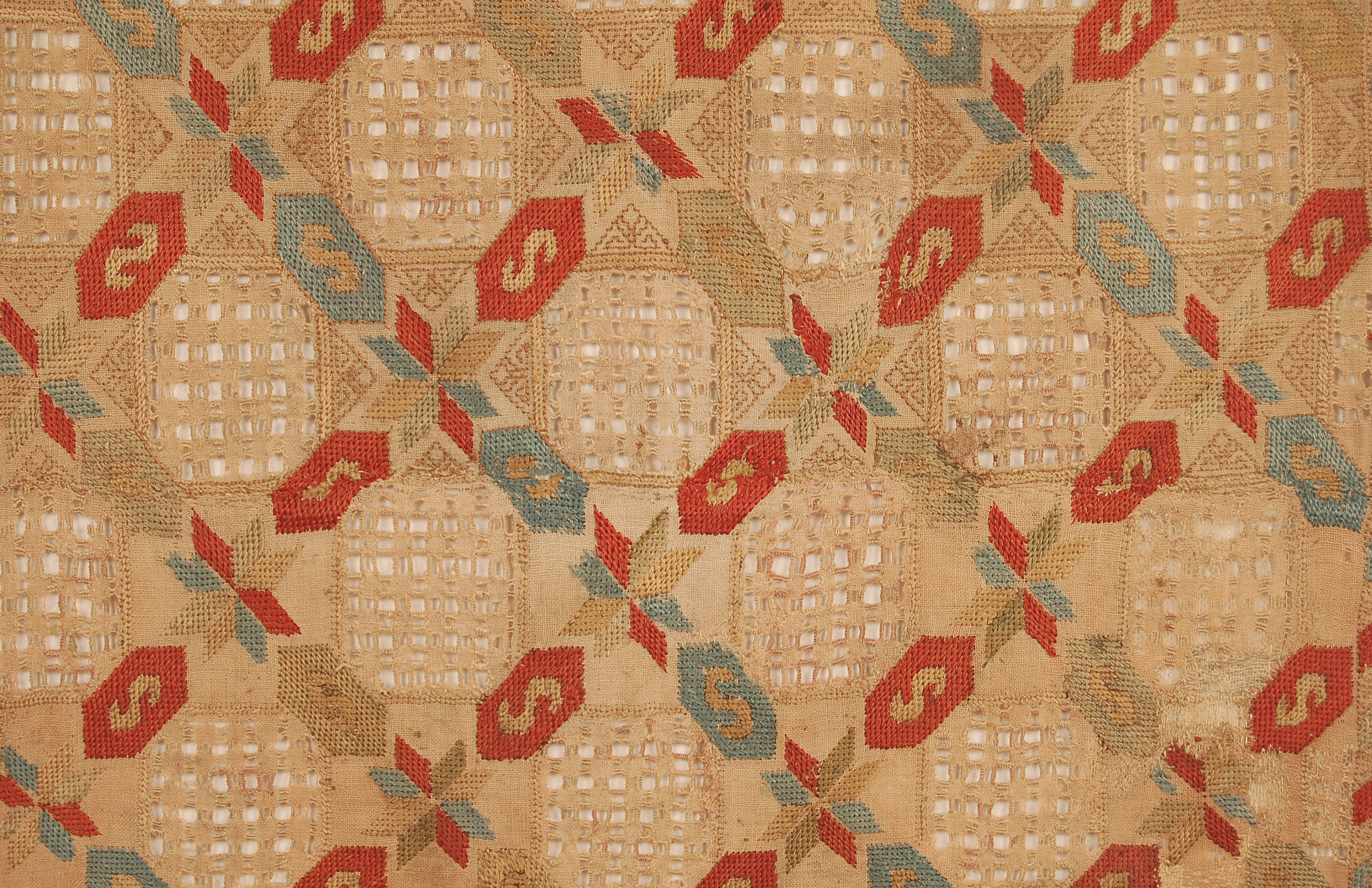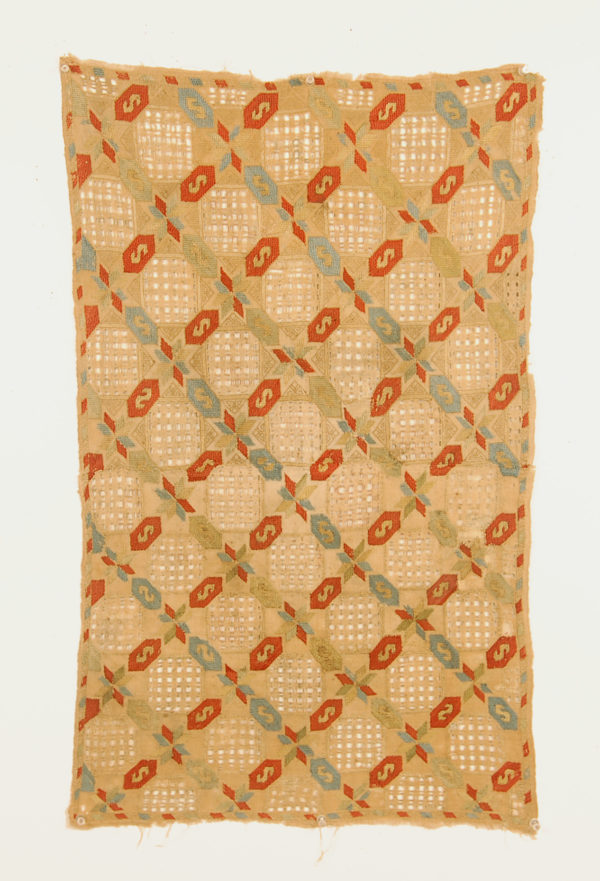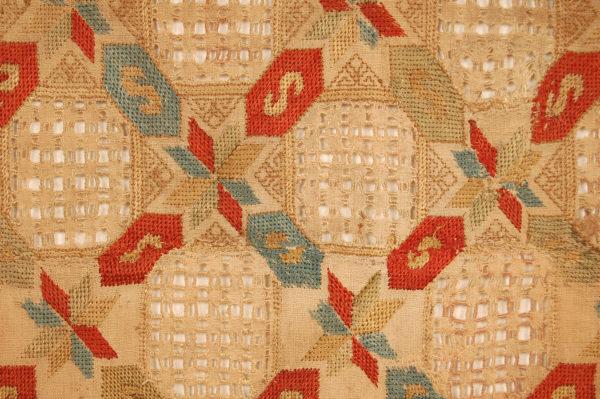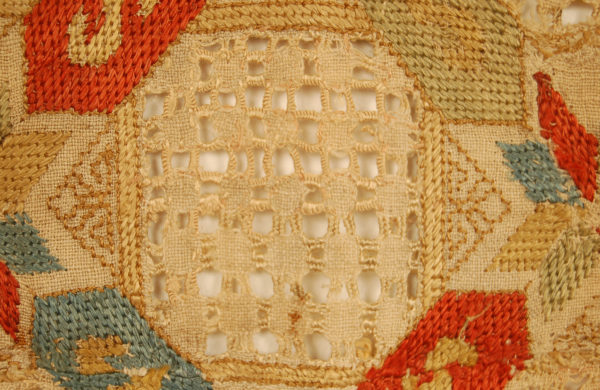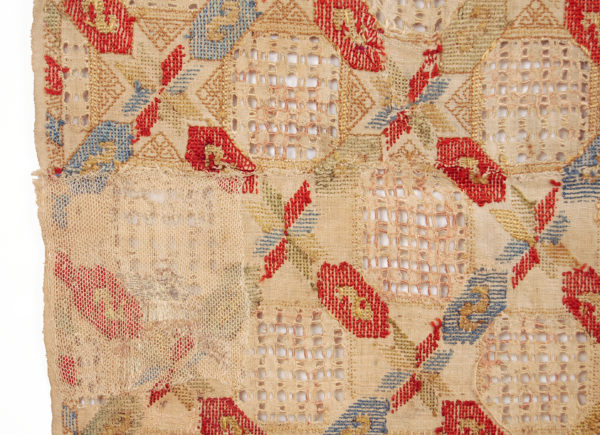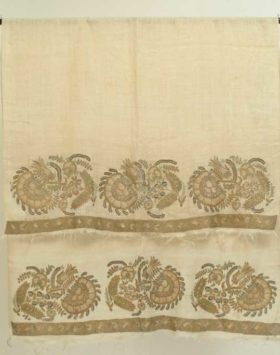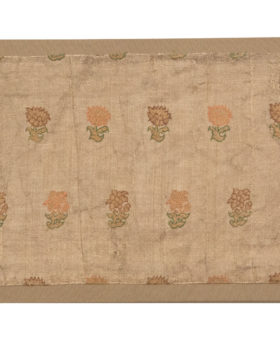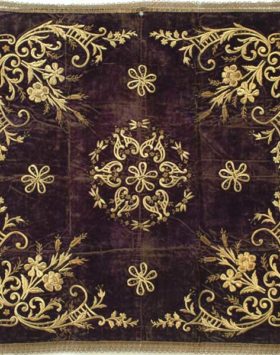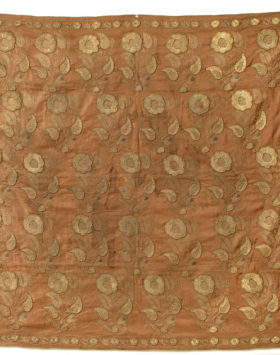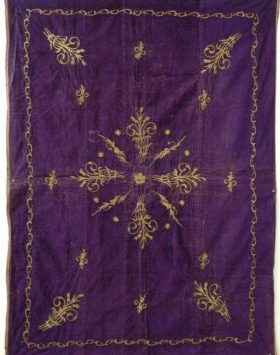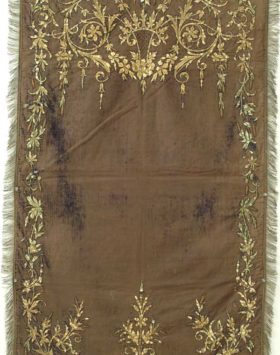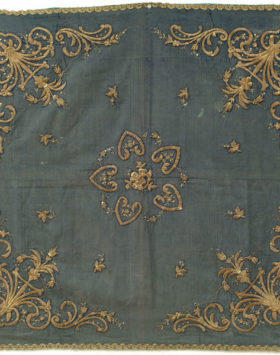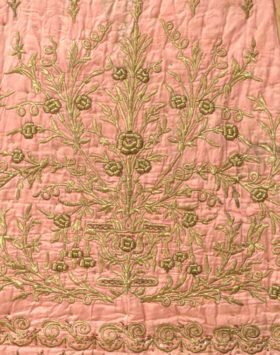Polychrome Naxos Embroidery
This 19th century Naxos embroidery exemplifies the complex social history of the Aegean Islands, which was the result of the combination of Greek, Venetian, and Ottoman rule in the region. In 1204, Marco Sanudo led some of his fellow Venetians to conquer and divvy up the central Aegean Islands. They instituted a feudal system in which the Venetian lords controlled the land but the indigenous Greek population was able to continue their craft traditions. The Venetian rulers were followed by the Ottomans, who controlled the land in a similar fashion. Thus, the Greeks continued to practice their diverse textile traditions instead of being influenced to create a more uniform style.
The people in this region placed great emphasis on the quality of their textiles. Homes tended to be small, and the main way each family displayed their wealth was by decorating their prominently featured wooden beds with fine textiles. Because they were such an important part of familial wealth, most of the textiles that remain were bed furnishings. This section of embroidery was probably the face of a pillow that would have been part of a well-to-do family’s bed furnishings.
Cyclades and northern Dodecanese embroiderers tended to create textiles that were diverse in color palette, design, and stitch types and that were more varied than those of other Aegean makers. Scholars group embroidery from this region into roughly three stylistic groups: running-stitch, satin-stitch, and cross-stitch. All three of these stitch types rely on counting the warp and weft yarns of the ground fabric. The running-stitch style is characterized by the flexibility of this stitch type. Embroiderers would usually use one color–often red–to create the design, though gold, green, and blue were also used, as seen in this example. This style is especially compelling because the embroiderers could make the same color silk thread catch the light differently by changing the direction of their stitch.
The satin-stitch style features many more colors than the running-stitch style. Scholars have broken this style down further into two more style-types. The first type has an open design layout made out of plain colors and fine stitches. The second is made out of intense colors and untwisted silk yarn and is very densely decorated, often with primary and secondary motifs combined together on the ground fabric. The cross-stitch style is a category of embroidery were the motifs are largely made out of the long-armed cross stitch. This style is characterized by bright colors, thick cotton ground fabric, a colorful silk fringe, and a hallmark deer motif with serrated horns.
This example of the running-stitch style is particularly interesting because though it resembles another work in the Textile Museum’s collection, it has an added design that seems to resemble early European cut-work lace. If so, it would be just one more indication of just how interconnected this region was and the influence diverse craft practices can have on each other.
Circa: 19th century
Origin: Naxos, Greece
Material: silk embroidery on linen
Condition: supportive interfacing and darned repairs throughout, fair
Dimensions: 30" x 19"
Inventory number: TX4523
$1,225
SOLD
Call: (646) 370-6801
E-mail us: yosi@sarajo.com
